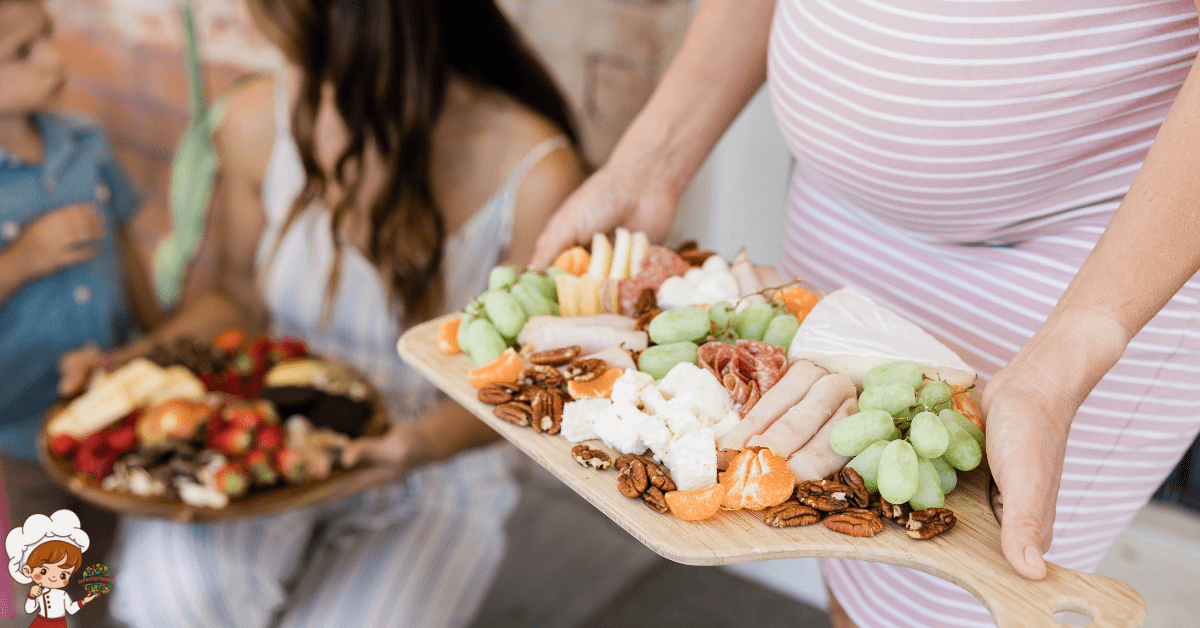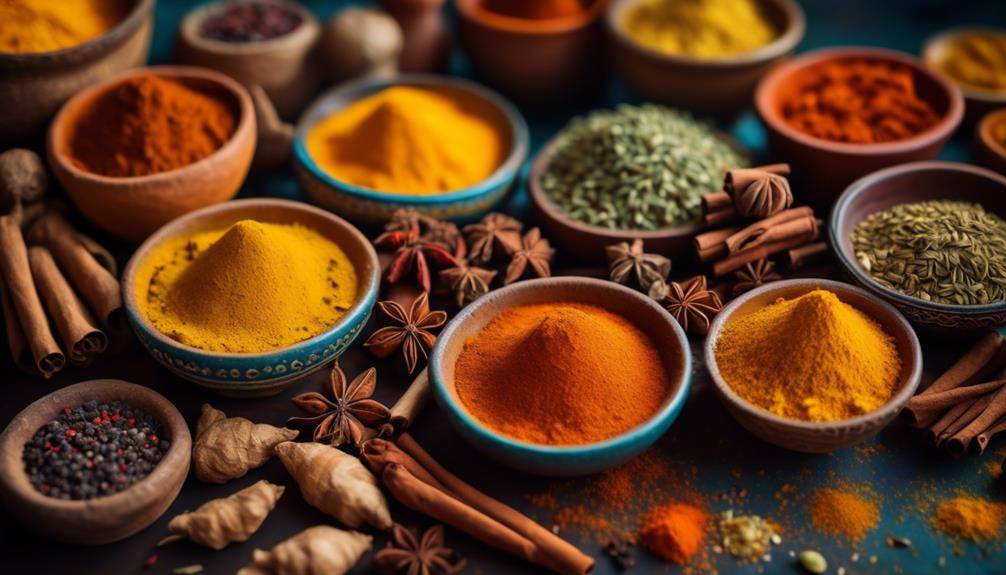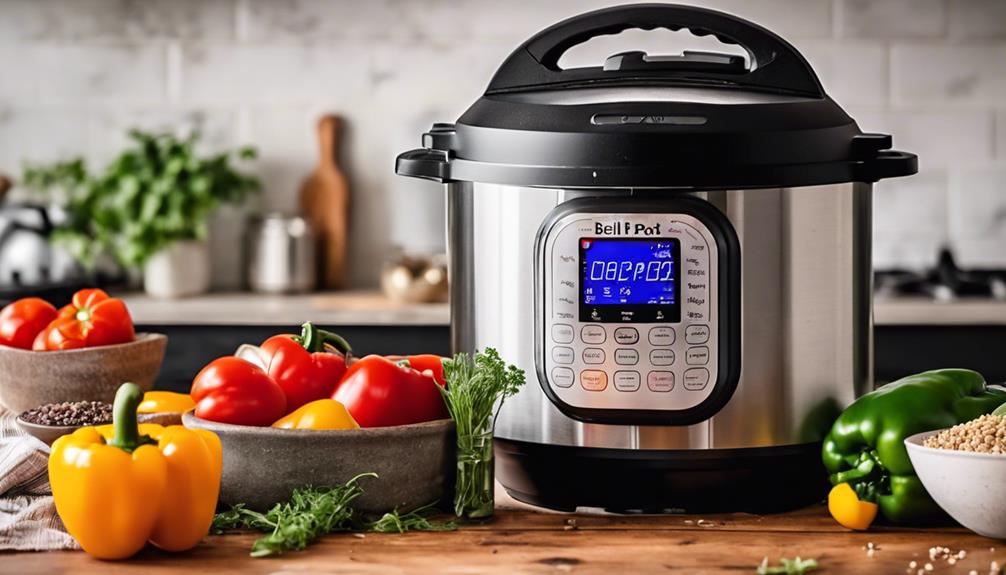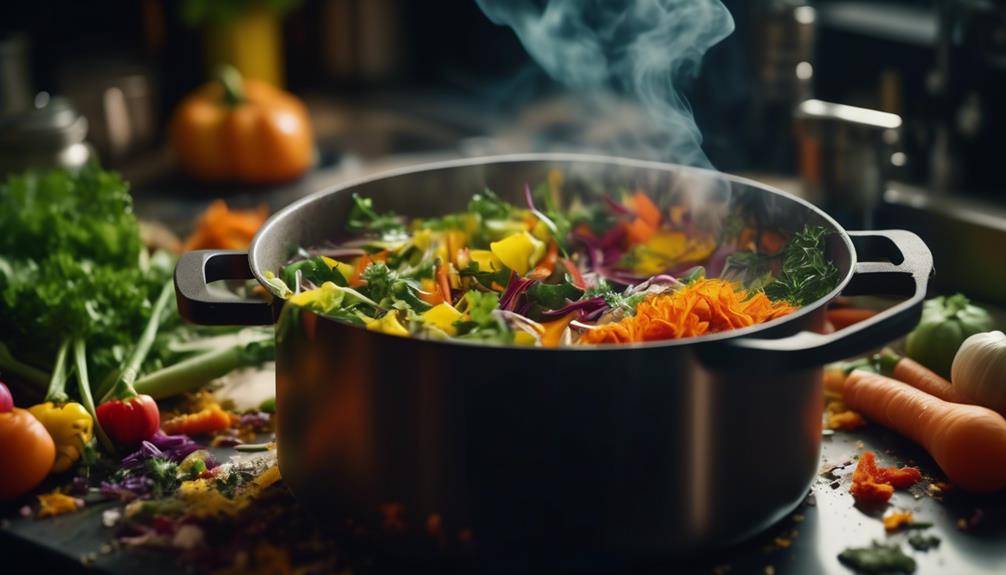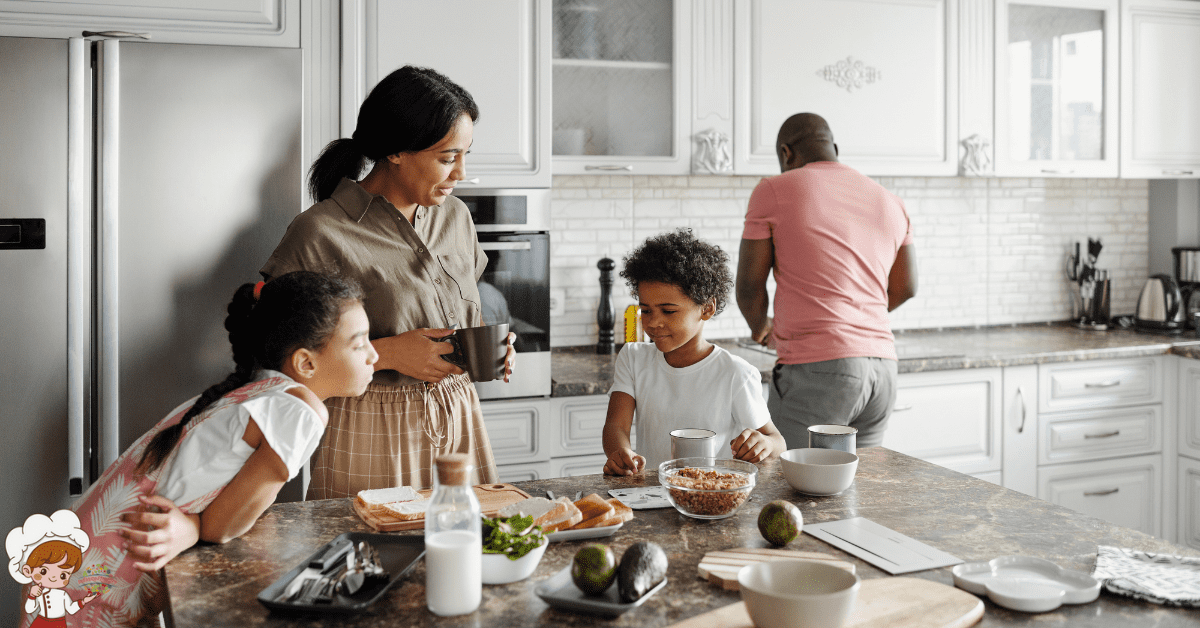Popular Gluten-Free Baking Recipes And Methods
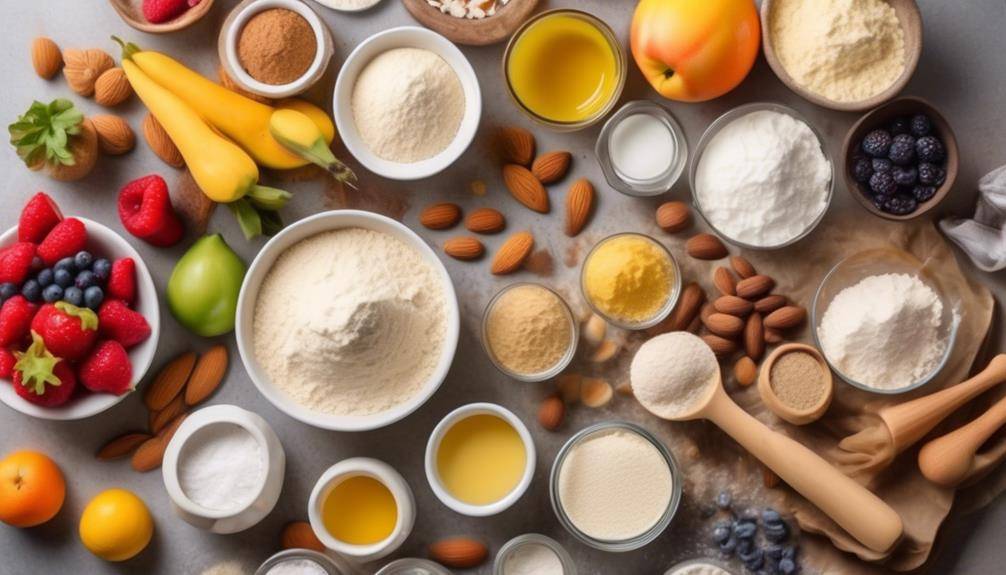
Have you ever been captivated by the aroma of freshly baked bread or tempted by a mouthwatering slice of cake, only to be deterred by the presence of gluten? Fear not, for in the world of Gluten-Free Baking Recipes And Methods, there lies a realm of possibilities waiting to be explored.
With a multitude of gluten-free flours and ingredients at your disposal, you can embark on a culinary adventure that transcends the boundaries of traditional baking. But how do you navigate this unfamiliar territory? How can you achieve the same texture and taste without the gluten? In this discussion, we will uncover the secrets of gluten-free baking, from essential ingredients and conversion techniques to alternative binders and delectable recipes that will leave you craving for more. So, grab your apron and join us on this tantalizing journey into the realm of gluten-free baking.
Understanding Gluten-Free Flours
To understand gluten-free flours, you need to know their properties and how they can be used in baking. When it comes to gluten-free baking, there are several options for gluten-free flours that you can use. These flours are made from a variety of grains, legumes, and nuts, and each one has its own unique properties. Understanding the different gluten-free flour options is crucial for successful gluten-free baking.
One popular gluten-free flour option is rice flour. Rice flour is a versatile option that can be used in a variety of baked goods. It has a mild flavor and a fine texture, making it a great choice for cakes, cookies, and breads. Another common gluten-free flour is almond flour. Made from ground almonds, almond flour adds a rich, nutty flavor to baked goods. It is often used in recipes for macarons, tarts, and muffins.
Other gluten-free flour options include oat flour, sorghum flour, and tapioca flour. Oat flour, made from ground oats, adds a hearty texture to baked goods. It is often used in recipes for pancakes, muffins, and breads. Sorghum flour, made from the grain sorghum, has a mild flavor and a slightly sweet taste. It is commonly used in recipes for cookies, cakes, and breads. Tapioca flour, made from the cassava root, is a starchy flour that adds moisture and chewiness to baked goods. It is often used in recipes for breads, cookies, and pie crusts.
Understanding the properties of these gluten-free flours and how they can be used in baking is key to successful gluten-free baking. Experimenting with different flour combinations and understanding gluten-free baking techniques will help you achieve delicious gluten-free baked goods.
Essential Ingredients for Gluten-Free Baking
When it comes to gluten-free baking, there are several key ingredients that are essential for achieving the right texture and flavor in your baked goods. These ingredients include gluten-free flours such as almond flour, rice flour, and tapioca flour, as well as binding agents like xanthan gum or psyllium husk. Additionally, there are various substitutes and alternatives for common baking ingredients like eggs, dairy, and sugar that can be used to accommodate dietary restrictions or preferences.
Key Gluten-Free Ingredients
One essential ingredient for gluten-free baking is xanthan gum, which helps provide structure and elasticity to baked goods. Xanthan gum is a common substitute for gluten in gluten-free recipes because it mimics the properties of gluten, allowing the batter or dough to bind together and trap air bubbles. This results in a lighter texture and improved rise in gluten-free baked goods.
Another key ingredient is gluten-free flour, such as almond flour, rice flour, or a blend of gluten-free flours. These flours are made from grains or nuts that do not contain gluten and are essential for creating the base of gluten-free recipes. It is important to note that gluten-free baking techniques require a different balance of ingredients to achieve the desired texture and flavor, as well as accommodate common gluten-free food allergies, such as those to wheat, barley, and rye.
Baking Substitutes and Alternatives
Xanthan gum and gluten-free flours are essential ingredients that can be used as substitutes and alternatives in gluten-free baking. Xanthan gum is a common ingredient in gluten-free recipes as it helps to bind the ingredients together, providing structure and elasticity in the absence of gluten. It acts as a thickener and stabilizer, preventing the baked goods from crumbling. Gluten-free flours, such as almond flour, coconut flour, and rice flour, are excellent alternatives to wheat flour. These flours can be used in a 1:1 ratio, making it easy to substitute them in your favorite recipes. They provide a different texture and flavor profile, adding variety to your gluten-free baking.
Additionally, for those who are lactose intolerant or follow a dairy-free diet, there are many dairy-free baking alternatives available. You can use plant-based milks, such as almond milk or coconut milk, as a substitute for regular milk. Vegetable oils, such as coconut oil or olive oil, can be used instead of butter. These gluten-free baking hacks and dairy-free alternatives allow you to enjoy delicious treats without compromising on taste or dietary restrictions.
Converting Traditional Recipes to Gluten-Free
To convert traditional recipes to gluten-free, you can make simple ingredient substitutions that will ensure delicious results without the use of gluten. Adapting family favorites to fit a gluten-free diet may seem daunting at first, but with a few tips and tricks, you can successfully recreate your favorite dishes.
When converting recipes, the most important step is to replace wheat flour with a gluten-free alternative. There are many options available such as rice flour, almond flour, or a gluten-free flour blend. Experiment with different flours to find the one that works best for each recipe. Keep in mind that gluten-free flours may absorb more moisture, so you may need to adjust the liquid content accordingly.
Another common issue when converting recipes is achieving the right texture. Gluten gives baked goods their structure and elasticity, so without it, the final product can be dense or crumbly. To combat this, you can add xanthan gum or guar gum to mimic the properties of gluten. These ingredients help bind the ingredients together and improve the texture of the finished product.
In some cases, additional adjustments may be needed. For example, if a recipe calls for breadcrumbs, you can substitute them with gluten-free breadcrumbs or crushed gluten-free crackers. If a recipe uses soy sauce, you can replace it with tamari or gluten-free soy sauce.
When troubleshooting common issues, it’s important to remember that gluten-free baking may require a bit of trial and error. Keep notes on what works and what doesn’t, and don’t be afraid to experiment. With practice and patience, you’ll be able to adapt your family favorites to gluten-free versions that are just as delicious.
Mastering the Art of Gluten-Free Bread
Looking to perfect your gluten-free bread baking skills? Mastering the art of gluten-free bread can be a challenging task, but with the right techniques and troubleshooting, you can achieve delicious results. Gluten-free bread techniques require a different approach compared to traditional bread baking, as gluten-free flours lack the elasticity and structure that gluten provides. However, with a few adjustments and tips, you can create bread that is just as satisfying and flavorful.
One important technique in gluten-free bread baking is using a combination of gluten-free flours. Rather than relying solely on one type of flour, mixing different flours such as rice flour, almond flour, and tapioca flour can help achieve a better texture and flavor. Experimenting with different ratios and combinations will help you find the perfect blend for your bread.
Another crucial step in gluten-free bread baking is ensuring proper hydration. Gluten-free flours tend to absorb more liquid, so it is essential to add enough moisture to prevent dry and crumbly bread. Adding additional eggs, yogurt, or even water can help achieve the desired consistency.
Troubleshooting gluten-free bread can be a common challenge for bakers. If your bread turns out too dense, try increasing the leavening agents such as yeast or baking powder. Alternatively, if the bread is too dry, consider adding more liquid or fat to the recipe. It may also be helpful to experiment with different binding agents like xanthan gum or psyllium husk powder, as they can improve the texture and structure of the bread.
Mastering the art of gluten-free bread takes practice and experimentation. By incorporating these gluten-free bread techniques and troubleshooting tips, you can elevate your baking skills and create bread that is both delicious and satisfying. Keep exploring and don’t be afraid to try new methods until you find the perfect recipe for your gluten-free bread.
Sweet and Savory Gluten-Free Pastry Recipes
For those seeking delicious and satisfying gluten-free pastry options, there are a variety of sweet and savory recipes to explore. When it comes to gluten-free pie crust variations, there are several alternatives that can mimic the texture and taste of traditional pie crusts.
One popular option is using a combination of gluten-free flours such as almond flour, rice flour, and tapioca flour. This mixture provides a delicate and flaky crust that holds up well to fillings. Another option is using gluten-free graham crackers or gluten-free cookies as the base for a pie crust. Simply crush the crackers or cookies, mix with melted butter, and press into a pie dish. This creates a sweet and crumbly crust that pairs well with fruit or creamy fillings.
When it comes to gluten-free puff pastry options, there are a few techniques that can be used to achieve a light and flaky pastry. One method is to use a combination of gluten-free flours, such as rice flour and potato starch, along with xanthan gum to bind the ingredients together. This creates a dough that can be layered with butter, folded, and rolled out to create flaky layers. Another option is to use gluten-free puff pastry sheets that are commercially available. These pre-made sheets can be thawed, rolled out, and used in a variety of sweet and savory recipes.
Whether you’re looking to make a gluten-free pie crust or a gluten-free puff pastry, there are plenty of options available to satisfy your cravings. Experiment with different gluten-free flours, crust variations, and pastry techniques to find the perfect recipe for your next sweet or savory creation.
Decadent Gluten-Free Cake Creations
Now that you’ve mastered the art of creating sweet and savory gluten-free pastries, it’s time to indulge in the world of decadent gluten-free cake creations. With a wide variety of options available, you can create stunning and mouthwatering cakes that are both gluten-free and visually appealing. Let’s explore some decadent cake decorating ideas and gluten-free cake frosting options to take your gluten-free baking to the next level.
When it comes to decorating gluten-free cakes, the possibilities are endless. You can use edible flowers, fresh berries, or even chocolate ganache to create a stunning visual display. Consider incorporating different textures and colors to make your cake truly stand out. For a sophisticated touch, try using edible gold leaf or silver dragees.
Now, let’s talk about gluten-free cake frosting options. Traditional buttercream frosting can easily be made gluten-free by substituting regular flour with gluten-free flour. Another option is cream cheese frosting, which adds a tangy and creamy element to your cake. If you’re looking for a lighter alternative, whipped cream frosting is a great choice. You can also experiment with flavored frostings such as lemon, chocolate, or coconut to add an extra layer of decadence to your cake.
Quick and Easy Gluten-Free Cookie Recipes
Looking to satisfy your sweet tooth without the hassle of complicated recipes? Look no further than these quick and easy gluten-free cookie recipes. With simple ingredients and straightforward instructions, you can whip up a batch of delicious cookies in no time. Plus, we’ll share some gluten-free flour alternatives and tips for achieving perfectly baked treats every time.
Simple Cookie Recipes
To create delicious gluten-free cookies in a quick and easy manner, try these simple recipes. When it comes to decorating gluten-free cookies, simple techniques can yield impressive results. One easy way to decorate is by using colored icing or frosting to create designs on the cookies. You can also use sprinkles or edible glitter to add a touch of sparkle. Another option is to use cookie cutters to create shapes and then frost or decorate them with icing. Now, let’s talk about some common mistakes to avoid when baking gluten-free cookies.
One mistake is using the wrong type of gluten-free flour. It’s important to use a gluten-free flour blend that is specifically designed for baking. Another mistake is overmixing the dough, which can result in cookies that are tough and dense. Remember to follow the recipe instructions and stop mixing as soon as the dough comes together. By following these simple techniques and avoiding common mistakes, you can easily create delicious gluten-free cookies.
Gluten-Free Flour Alternatives
For quick and easy gluten-free cookie recipes, explore alternative flours that provide a delicious and satisfying texture. When it comes to gluten-free baking, there are several flour alternatives that can be used as substitutes for wheat flour. One option is gluten-free baking mixes, which are readily available in most grocery stores. These mixes are often made from a combination of different gluten-free flours, such as rice flour, sorghum flour, and tapioca starch. They are specifically formulated to mimic the texture and taste of traditional wheat flour, making them a great choice for gluten-free cookies.
Another option is to use a gluten-free bread machine. While bread machines are typically used for making bread, they can also be used to make cookie dough. Simply combine the alternative flour, along with other ingredients, in the bread machine and let it mix the dough for you. By exploring these gluten-free flour alternatives, you can enjoy quick and easy gluten-free cookies with a texture that is just as satisfying as their gluten-filled counterparts.
Tips for Perfect Cookies
To achieve perfect gluten-free cookies, follow these expert tips and tricks for a quick and easy baking experience. When making gluten-free chocolate chip cookies, it is important to use a blend of gluten-free flours to achieve the right texture. A combination of rice flour, almond flour, and tapioca flour works well.
Additionally, make sure to use xanthan gum or guar gum as a binding agent to prevent the cookies from crumbling. For a crispy texture, refrigerate the dough for at least an hour before baking. When it comes to gluten-free cookie decorating, use a gluten-free icing recipe or opt for naturally gluten-free toppings like chopped nuts or dried fruits. Remember to thoroughly clean all utensils and surfaces to avoid cross-contamination. With these tips, you can enjoy delicious gluten-free cookies that everyone will love.
Gluten-Free Baking Tips and Tricks
Consider these gluten-free baking tips and tricks to enhance your skills in the kitchen. When it comes to gluten-free baking, it is important to understand the right techniques to achieve the best results. One of the key techniques is to use a combination of gluten-free flours. Experiment with different blends, such as rice flour, almond flour, and tapioca flour, to find the perfect combination for your recipes. This will help mimic the texture and taste of traditional baked goods.
Another important tip is to measure your ingredients accurately. Gluten-free flours can be more sensitive, so it is crucial to use precise measurements to ensure the right texture and structure. Invest in a kitchen scale for more accurate measurements, as it can make a big difference in your gluten-free baking.
Troubleshooting gluten-free recipes can also be a challenge. If your baked goods turn out too dense or dry, try adding an extra egg or a bit more liquid to the recipe. This can help improve the texture and moisture level of your gluten-free treats. Additionally, adding a small amount of xanthan gum or guar gum can help bind the ingredients together and prevent your baked goods from becoming crumbly.
In addition to these techniques, it is important to be patient and practice. Gluten-free baking may require some trial and error to find the perfect balance of ingredients and techniques for your desired outcome. Don’t be discouraged if your first few attempts don’t turn out as expected. With time and practice, you will become more confident and skilled in gluten-free baking.
Exploring Alternative Binders in Gluten-Free Baking
When it comes to gluten-free baking, it is crucial to explore alternative binders to achieve the desired texture and structure in your baked goods. Traditional baking relies on gluten to provide elasticity and hold the ingredients together. However, gluten is not present in gluten-free flours, which can make it challenging to create the same results. That’s where alternative binders come in.
One popular alternative binder in gluten-free baking is xanthan gum. Xanthan gum is a natural ingredient derived from fermented sugars. It acts as a thickening agent and helps to mimic the elasticity of gluten. By adding xanthan gum to your gluten-free bread dough, you can improve its texture and prevent it from crumbling.
Another alternative binder is psyllium husk. Psyllium husk is a fiber-rich ingredient that absorbs moisture and creates a gel-like consistency. When used in gluten-free bread techniques, it helps to bind the ingredients together and give the bread structure. It also adds moisture and improves the shelf life of your baked goods.
Chia seeds and flaxseeds are also commonly used as alternative binders in gluten-free baking. These seeds are high in fiber and can absorb a significant amount of liquid. When mixed with water, they form a gel-like substance that helps to hold the ingredients together. They also add texture and a nutty flavor to your baked goods.
Gluten-Free Baking Recipes And Methods; Frequently Asked Questions
Can I Use Regular All-Purpose Flour Instead of Gluten-Free Flour in These Recipes?
Yes, you can use regular all-purpose flour instead of gluten-free flour in these recipes. However, keep in mind that the texture and taste may differ. Experiment with almond flour substitutions and gluten-free egg substitutes for best results. Also, follow tips to prevent gluten-free cookie spreading.
How Can I Make Gluten-Free Bread That Is Not Dry and Crumbly?
To make your gluten-free bread moist and not crumbly, use ingredients like xanthan gum or psyllium husk. These bind the dough together and create a better texture. Experiment with different gluten-free flours to find the best one for your bread.
Are There Any Gluten-Free Alternatives to Eggs in Baking?
If you’re looking for gluten-free alternatives to eggs in baking, there are a few options to consider. Flaxseed meal, applesauce, and mashed bananas can all provide moisture and binding properties similar to eggs.
Can I Substitute Almond Flour for Other Gluten-Free Flours in Recipes?
Yes, you can substitute almond flour for other gluten-free flours in recipes. Almond flour adds a nutty flavor and a moist texture to baked goods. It is one of the best gluten-free flours for baking.
What Are Some Tips for Preventing Gluten-Free Cookies From Spreading Too Much During Baking?
To prevent gluten-free cookies from spreading too much during baking, try chilling the dough before baking, using a combination of flours, adding a binding agent like xanthan gum, and ensuring your oven temperature is accurate. These tips will help you achieve perfect, non-spreading cookies.
Conclusion
In conclusion, with the right understanding of gluten-free flours and essential ingredients, converting traditional recipes to gluten-free can be a successful venture. Mastering the art of gluten-free bread, creating sweet and savory pastries, and indulging in decadent cake creations are all possible with gluten-free baking. Don’t forget to try out quick and easy cookie recipes and explore alternative binders for added variety. With these tips and tricks, gluten-free baking can be a delicious and enjoyable experience.



